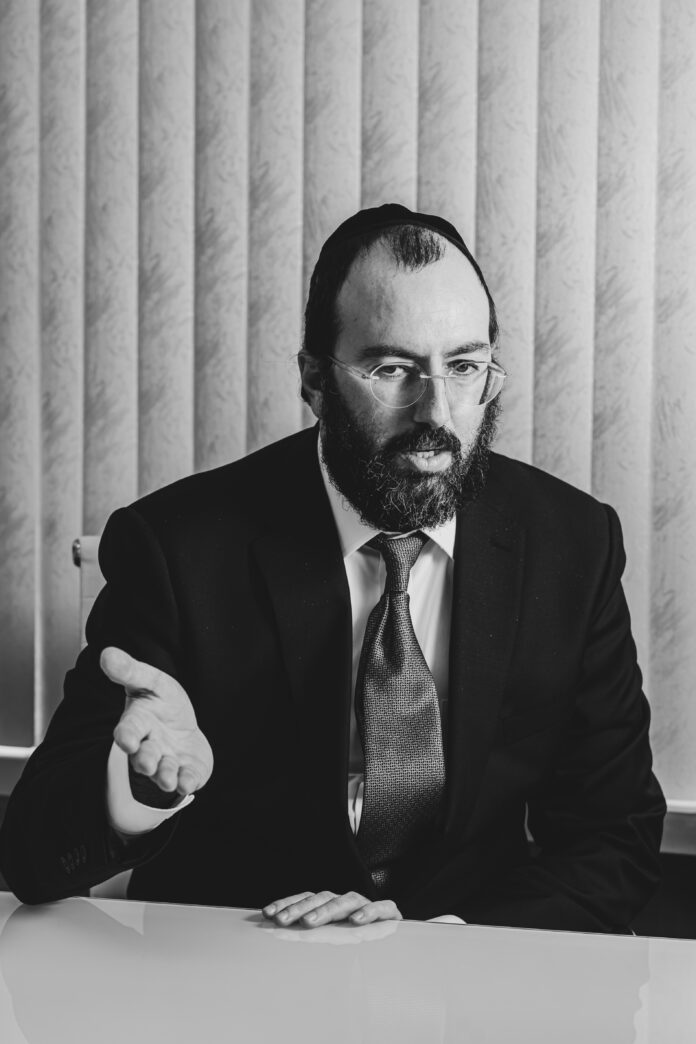The atrocities that took place on Simchas Torah brought to the fore not only the worst of mankind but also its best, highlighting the most positive attributes of klal Yisrael. And yet, few people have risen to the occasion with as much energy and resolve to help those affected by the tragedy as Rav Aharon Assayag of Netivot. A mechanech and askan par excellence, Rav Assayag’s projects to rebuild Eretz Yisrael’s south are numerous and mindboggling in scope.
I recently had the pleasure of hosting him in Ami’s offices during Chanukah. Here is his story.
You’ve been very involved in helping the residents of Netivot and the surrounding areas ever since the Simchas Torah massacre. Were you there for Yom Tov?
Yes, and we actually had an unusual story. Last Simchas Torah, we started something very special in our beis midrash: Instead of donating money, everyone who got an aliyah undertook to learn a maseches instead. The result was that we were able to have a Siyum HaShas, and we decided to schedule it for the following Simchas Torah. We told all the families that we would be having a grand seudat Yom Tov this year to celebrate. We rented a hall and ordered food for 130 families.
Everything was fully prepared, but at 7:15 a.m. that morning a policeman came to my house and said, “Rabbi Assayag, don’t open the beis midrash. There’s a possibility that there are terrorists in the city.” When I asked him why they weren’t making any public announcements, he explained that because there was only a suspicion they didn’t want to alarm anyone. Nonetheless, he wanted me to know that it was safeik pikuach nefesh. After he left, I sent messengers to whomever I could think of to tell them not to leave their homes.
Was your beis midrash the only one that closed?
Some of the others had tefillot while others didn’t, depending on who knew what was going on. But the people who were counting on joining our seudah didn’t have what to eat because they hadn’t bothered to cook. So two bachurim went around and brought food to each of the 130 families. We kept hearing rockets at a noise level we’d never heard before, so we understood that something out of the ordinary was happening, but we didn’t know what.
Around noontime, we were sitting in our house with the windows open when we heard a big explosion that sounded very close. A rocket had landed on a building only six or seven buildings away from us. It had four stories and 20 tenants, and the whole thing went up in flames. Someone called the firefighters right away, but they said they didn’t have anyone they could send out. Everyone who lived in the area, including two of my sons, ran over to help get people out of the building. Tragically, three people passed away.
It’s impossible to describe what it’s like to call the fire department in an emergency only to be told that there’s no one available. It’s like suddenly being transported 100 years into the past. It pulls the rug out from under you.
How far is Netivot from Be’eri?
From the chareidi part of Netivot, it’s about seven or eight minutes by car. Be’eri is on the Gaza border. On the day of Simchas Torah, we kept hearing gunshots, but didn’t know where they were coming from or what was happening. Even right after Yom Tov, all they initially said was that 100 people had been killed. Around five hours later, they changed that to 200. It took a while until the full extent of the tragedy was revealed. For the next three weeks, people were still living in fear that there might be terrorists hiding under their homes.
To read more, subscribe to Ami





















